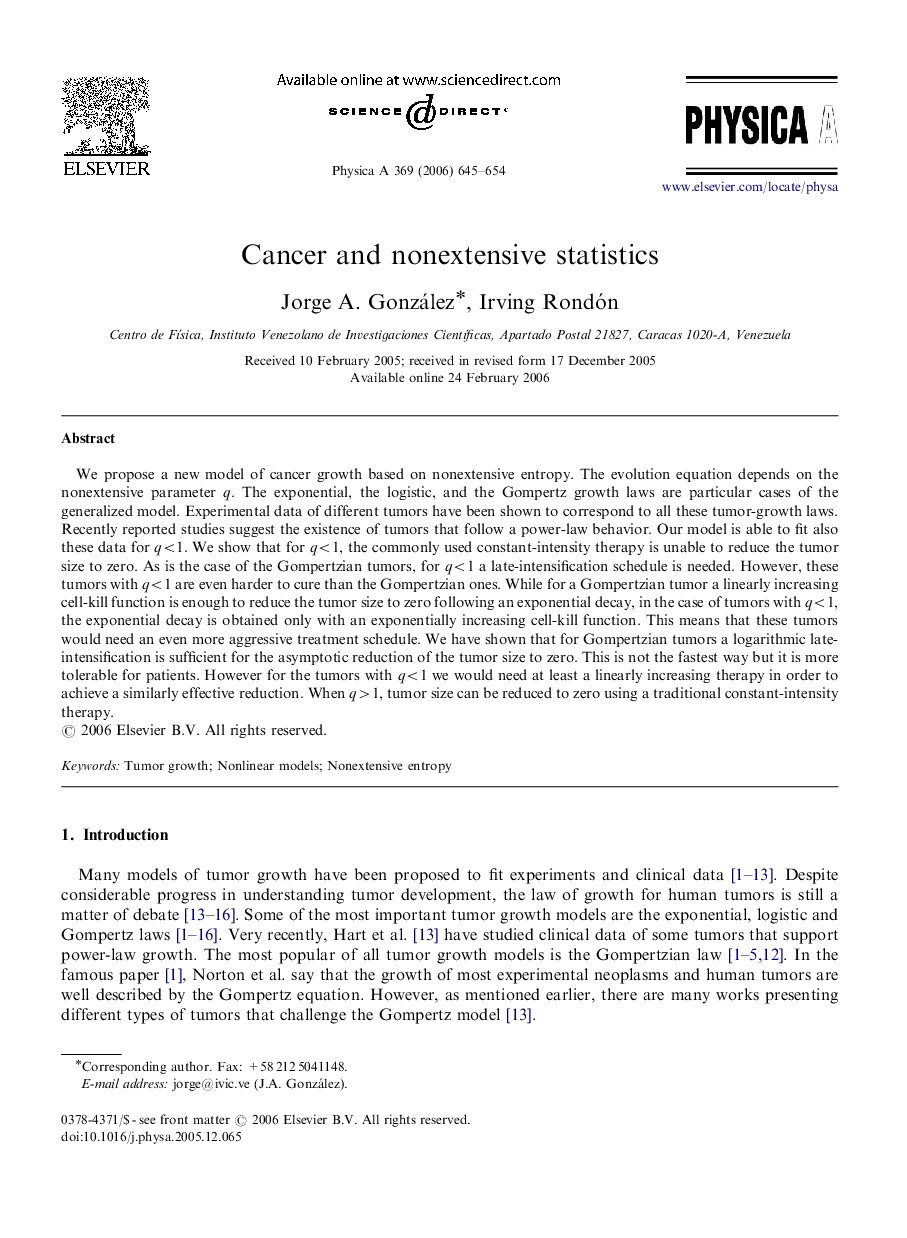| Article ID | Journal | Published Year | Pages | File Type |
|---|---|---|---|---|
| 979747 | Physica A: Statistical Mechanics and its Applications | 2006 | 10 Pages |
Abstract
We propose a new model of cancer growth based on nonextensive entropy. The evolution equation depends on the nonextensive parameter q. The exponential, the logistic, and the Gompertz growth laws are particular cases of the generalized model. Experimental data of different tumors have been shown to correspond to all these tumor-growth laws. Recently reported studies suggest the existence of tumors that follow a power-law behavior. Our model is able to fit also these data for q<1. We show that for q<1, the commonly used constant-intensity therapy is unable to reduce the tumor size to zero. As is the case of the Gompertzian tumors, for q<1 a late-intensification schedule is needed. However, these tumors with q<1 are even harder to cure than the Gompertzian ones. While for a Gompertzian tumor a linearly increasing cell-kill function is enough to reduce the tumor size to zero following an exponential decay, in the case of tumors with q<1, the exponential decay is obtained only with an exponentially increasing cell-kill function. This means that these tumors would need an even more aggressive treatment schedule. We have shown that for Gompertzian tumors a logarithmic late-intensification is sufficient for the asymptotic reduction of the tumor size to zero. This is not the fastest way but it is more tolerable for patients. However for the tumors with q<1 we would need at least a linearly increasing therapy in order to achieve a similarly effective reduction. When q>1, tumor size can be reduced to zero using a traditional constant-intensity therapy.
Related Topics
Physical Sciences and Engineering
Mathematics
Mathematical Physics
Authors
Jorge A. González, Irving Rondón,
